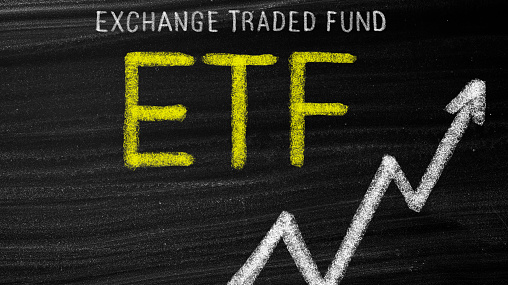
Editor's note: Matteo Giovannini is a finance professional at the Industrial and Commercial Bank of China in Beijing and a member of the China Task Force at the Italian Ministry of Economic Development. The article reflects the author's views, and not necessarily those of CGTN.
China's market economy reform and opening-up policy has been gaining traction this year through very pragmatic decisions aimed at elevating the status of China's domestic financial market to a level that matches the size and the influence that the country has successfully achieved over the last few decades in becoming the world's second-largest economy.
Starting from last Friday, China's nearly $160 billion exchange-traded fund market has become more accessible than ever through the launch of a first batch of ETFs between Hong Kong and the Chinese mainland that allows for the cross-listed trading of this financial instrument in a move that further extends an already functioning Stock Connect program between Shenzhen and Hong Kong.
The idea of a so-called "ETF Connect" scheme can be dated back to 2016 when regulators considered to broaden trading links between the Chinese mainland and Hong Kong financial markets but then technical issues related to clearance and settlement in two different jurisdictions that rely on different currencies slowed the implementation process to today.
The most evident aspect to consider is that through this move the linkage between Hong Kong and Shenzhen is raised to another level and the increased cooperation between the two capital markets can be seen as a result of Chinese President Xi Jinping's request, during his recent trip to Shenzhen for the 40th anniversary of the establishment of the Shenzhen Special Economic Zone, to mutually reinforce the development of the Chinese mainland and the special administrative regions and to promote alignment of economic rules and institutions in the Greater Bay Area.
Furthermore, the launch of the cross-listing scheme underlines one again the essential centrality of Hong Kong for China as Asia's leading ETF marketplace and a strategic step forward in terms of cooperation between onshore and offshore Chinese exchanges that follows the cross-boundary wealth management pilot scheme launched in July, the so-called "Wealth Management Connect," marking another significant milestone for the Greater Bay Area integration and increasing the number of cross-border financial instruments available to residents in the same region.
The introduction of an ETF Connect scheme is certainly welcomed by global investors that now have the opportunity to directly access China's market, once considered an almost impossible mission due to entry restrictions and quotas, thanks to a financial instrument that is very popular in investors' portfolios because it is characterized by low-risk, low management fee, high degree of diversification and large exposure to stocks in both developed and emerging markets.

A signage of the Hong Kong Exchanges & Clearing Ltd. (HKEX) at the Exchange Square complex, which houses the Hong Kong Stock Exchange, in Hong Kong, China, August 19, 2020. /Getty
A signage of the Hong Kong Exchanges & Clearing Ltd. (HKEX) at the Exchange Square complex, which houses the Hong Kong Stock Exchange, in Hong Kong, China, August 19, 2020. /Getty
In this sense, China's move to launch this new scheme represents the next stage of the integration of its domestic capital markets into the global financial markets' network as a result of the recent inclusion of Chinese stocks and bonds in a greater number of benchmark global indexes, offering the opportunity to foreign investors to include China's securities in their portfolio in order to match or overcome the return of the indexes.
An undisputed advantage and reason of future success of the ETF Cross-Listing scheme is going to be a considerable reduction of the tracking error, the difference in performance between a managed portfolio and the corresponding benchmark, in comparison to other ETFs issued in major global financial hubs such as London or New York that usually generate this spread as a consequence of the presence of limits to foreign ownership to a fixed percentage in yuan-denominated shares.
In addition, the launch of the scheme represents an important extension in terms of accessibility to the Chinese market to a larger number of foreign investors after a bilateral China-Japan ETF Connectivity scheme was established last year between the Japanese Exchange Group and the Shanghai Stock Exchange allowing for a higher financial integration between the world's second and third capital markets.
The launch of an ETF Connect Scheme arrives just-in-time because from the one hand allows China to increase the level of incoming flow of foreign capital in order to support the recovery from the pandemic and the country's future development while on the other hand permits global investors to put an end to an historically and structurally underweighted presence in China while the country is experiencing a V-shaped recovery with a GDP growth at 4.9 percent in the third quarter of this year.
Lastly, a greater financial connectivity between mainland China and Hong Kong and an increased participation of foreign investors into China's domestic capital markets could also well-serve the internationalization of the renminbi, as stressed by the People's Bank of China Governor Yi Gang during the last Bund Forum in Shanghai, through more yuan-denominated assets in global investors' portfolios and through policies aimed at reducing capital control and increasing the renminbi exchange rate flexibility.
(If you want to contribute and have specific expertise, please contact us at opinions@cgtn.com.)